By Emma House, Curator
The Garden Museum’s Mortlake tapestry which dates from the 1630s and is the earliest depiction of a woman gardening in the collection has now started a programme of conservation. This exciting project will enable it to go on display next year at the museum.
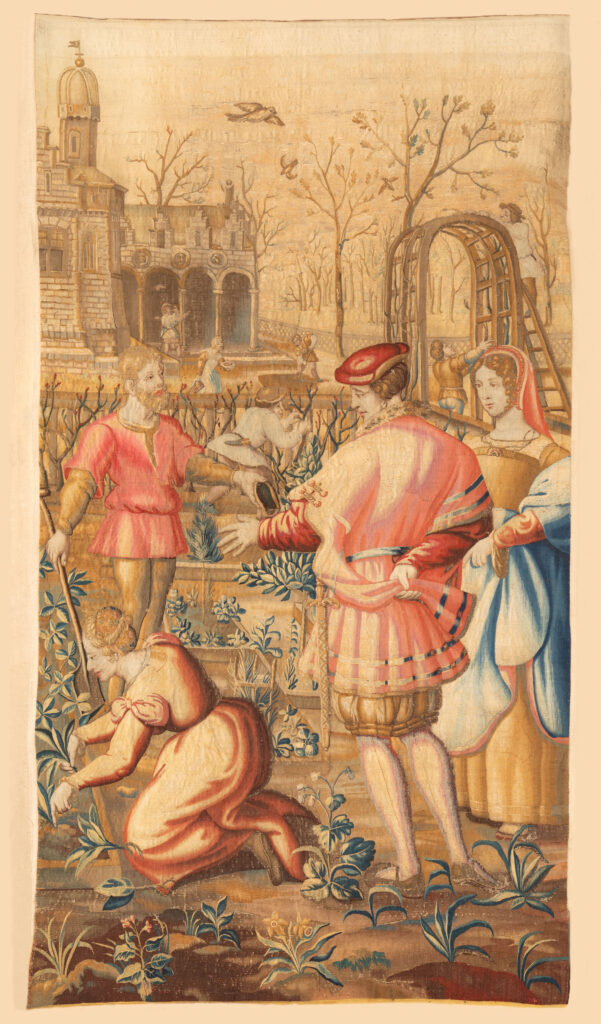
Last year more than 100 people donated to support its conservation through our campaign with the Art Fund’s Art Happens crowdfunding scheme. The museum has also received funding from the Leche Trust and the Idlewild Trust.
This generous support means we can now carry out a full programme of conservation to remove old, failing repairs, protect the more delicate silk areas, as well as remove old water staining and sew up slits that occur between areas of thread changes in the tapestry. A new lining will be added to provide additional support and help to minimise possible future damage caused by moths.
The tapestry travelled to Zenzie Tinker Conservation studio in Brighton earlier in the summer where the team carried out a thorough assessment. They removed the old lining and tested patches from old repairs on the rear to assess how they might shrink during washing. They also tested some older repairs to see if these would run during the washing process.
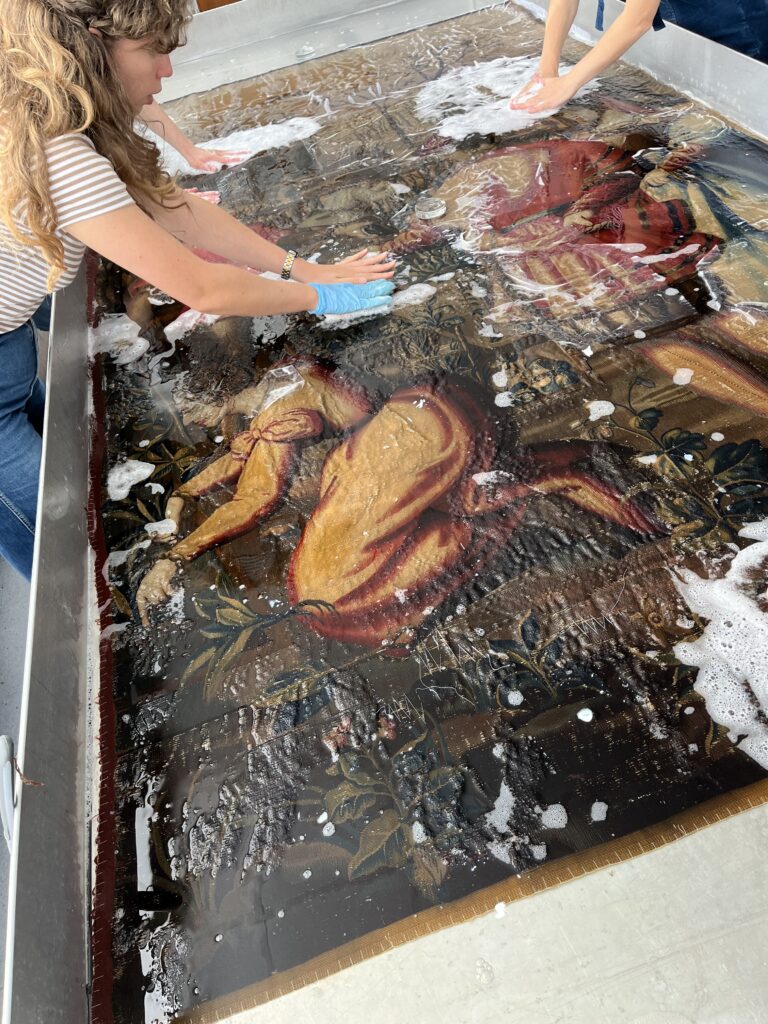
A few weeks ago, I travelled to Brighton to see the first stage of the conservation work, the tapestry being washed.
The tapestry was laid out in a large, flat wash bath, initially face up to soak in water. Delicate areas of the tapestry had netting stitched over them to protect them during washing. Water was added with a very diluted detergent and then sponges were used to gently work over the surface of the tapestry. The water was drained and sampled to see how much cleaner the tapestry was becoming. The level of detergent in the water was decreased in subsequent washes.
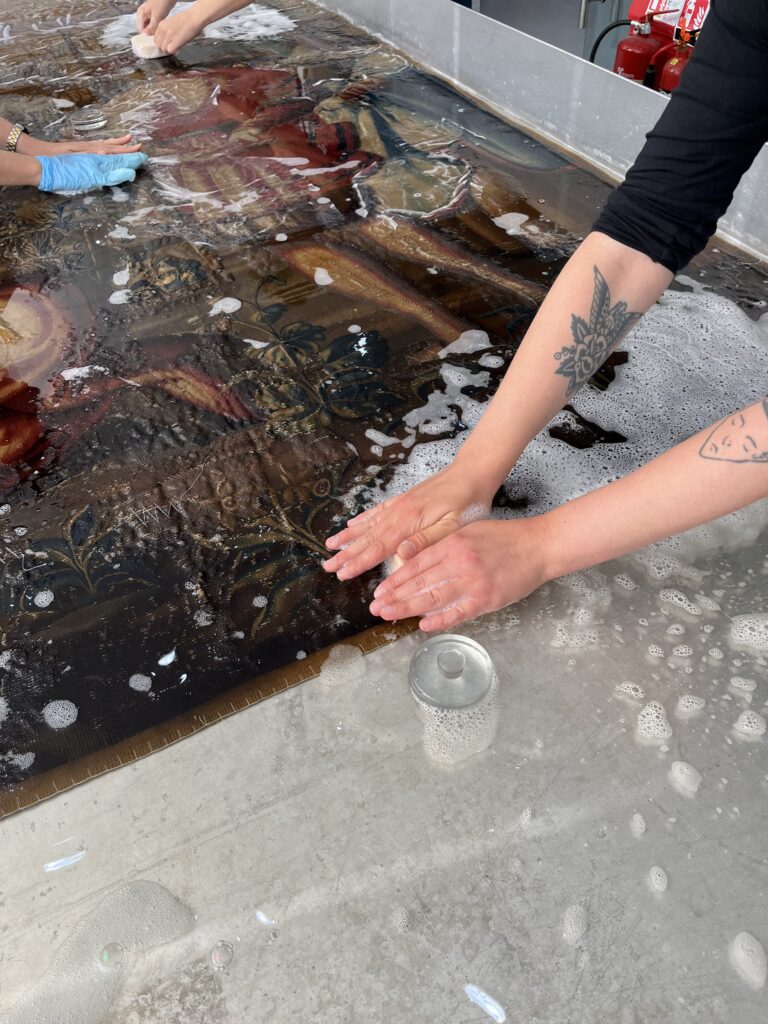
The tapestry was then alternated between face up and face down so that both the back and front are cleaned equally. The surface was worked over with sponges each time to help dirt particulates be released from the wool and silk fibres.
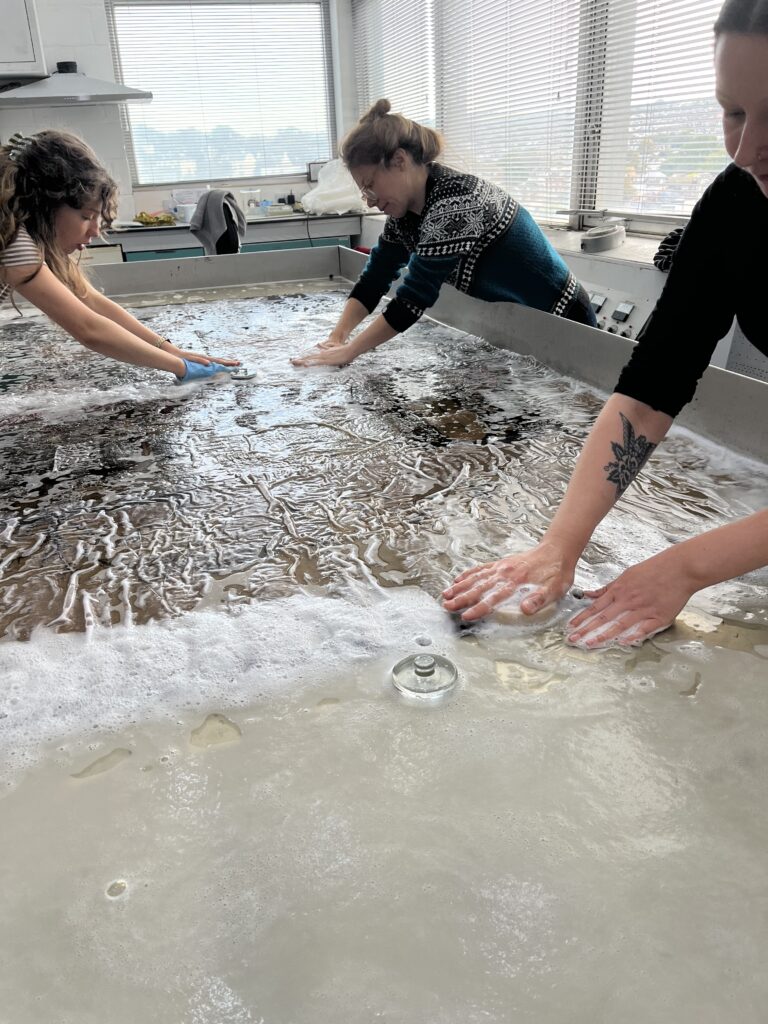
The water samples taken at each stage, showed the tapestry was becoming cleaner. When the samples became clear the tapestry had a final rinse with deionised water. Deionised water is much purer than tap water and this rinsing stage removed any impurities or salts that occur naturally in tap water.
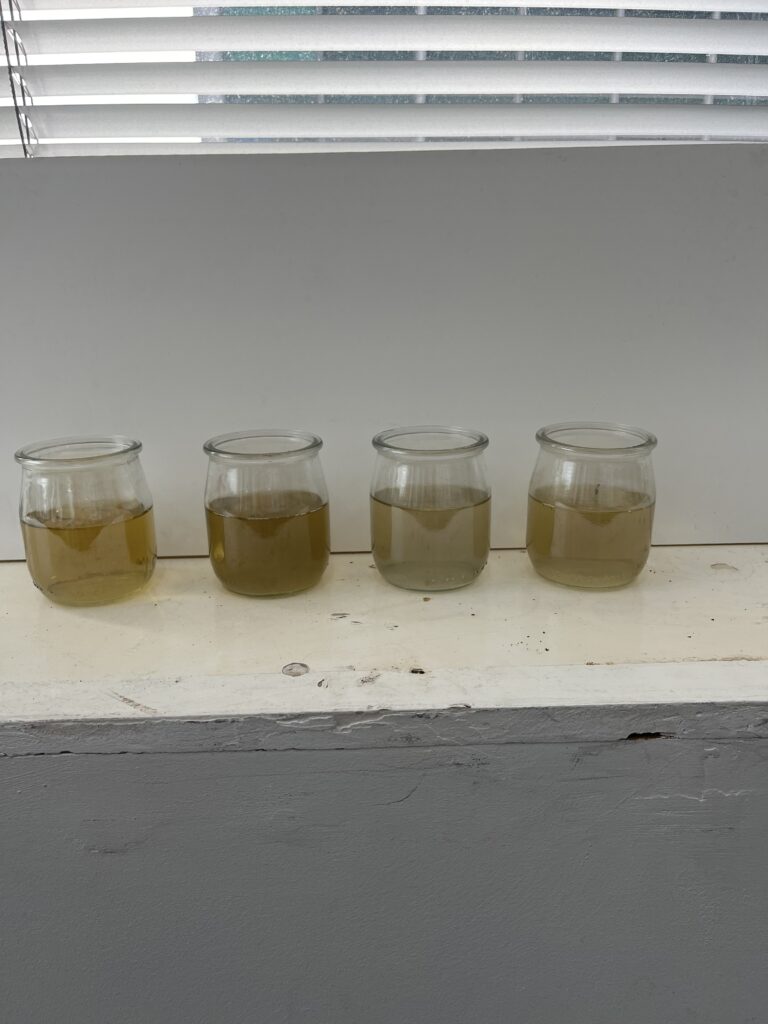
Some areas of the tapestry were then pinned out to mitigate against different shrinkage rates in some of the old repairs on the rear. The tapestry was then gently dried with cool hand dryers.
The conservators worked in two teams, the first starting at 7am to commence washing and the second team staying late into the evening to complete the drying process.
With nearly four hundred years of dirt removed from the tapestry the colours have become bolder, and the old water staining is no longer visually displeasing. The tapestry is now ready to be mounted onto a roller system so the next stage of conservation can commence.
For more behind the scenes stories like this, sign up to the Garden Museum newsletter.
